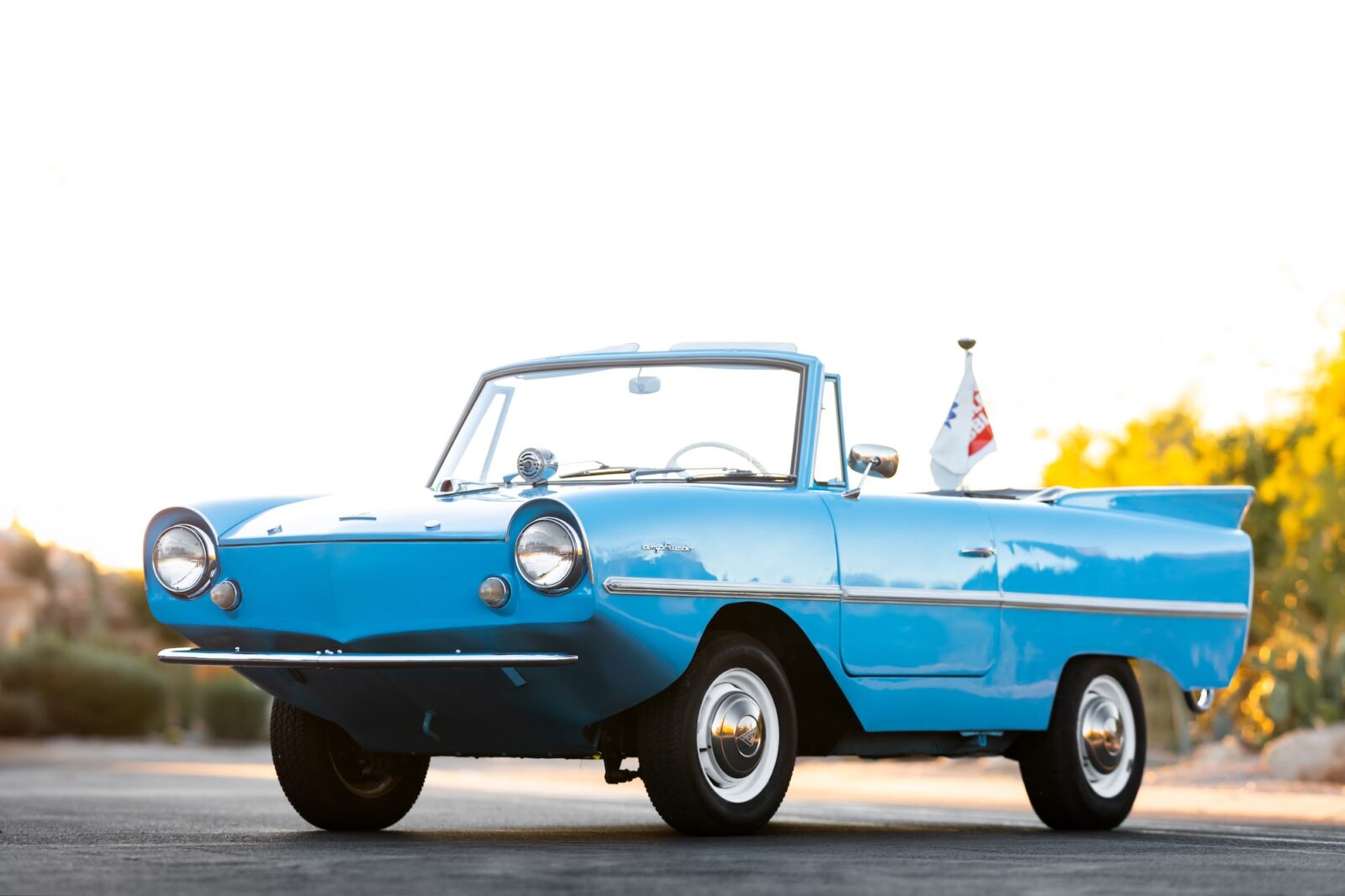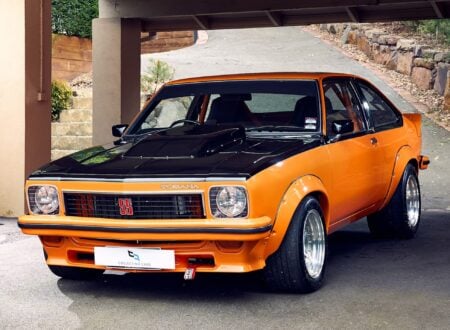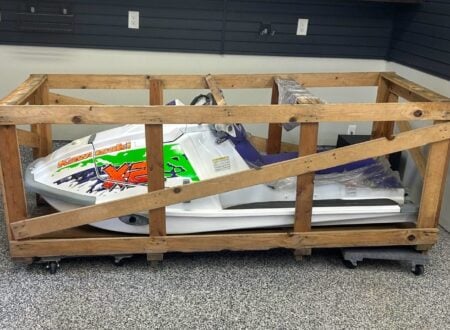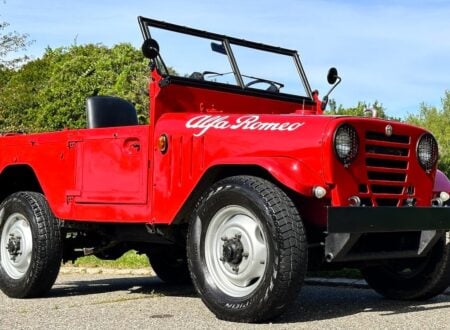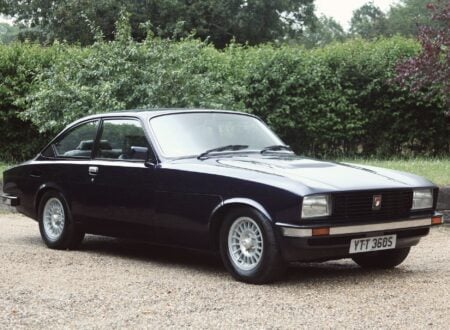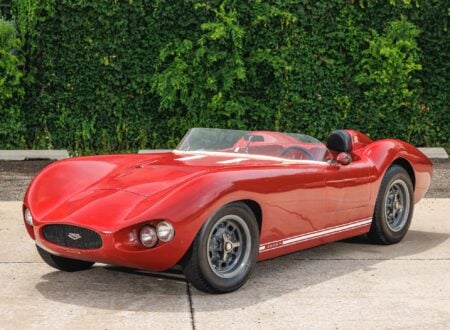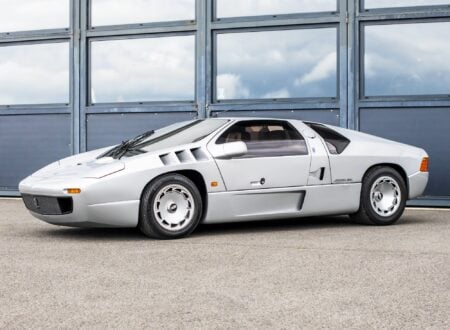The Amphicar is almost certainly the best-known amphibious car in history. Its development started in the years after WWII, it came to market in the early 1960s, and thousands of them would be sold by the time the company closed down in 1968.
The Amphicar can be driven directly into the water and the piloted like a boat – President Lyndon B. Johnson had one on his ranch and loved to prank guests by showing them around in the Amphicar, then yelling about the brakes failing as he drove them into the lake.
Fast Facts – The Amphicar 770
- The Amphicar was conceptualized and designed by Hans Trippel, a German engineer with experience in amphibious vehicles dating back to the 1930s. Trippel’s prior work included amphibious military vehicles for the Nazi war machine during WWII.
- Trippel’s vision for the Amphicar was to create a versatile vehicle that could operate both on land and water, primarily for civilian and recreational use. It has since become (arguably) the best-known amphibious car in history.
- The Amphicar was a marvel of engineering, featuring a Triumph Herald engine that was mounted in the rear, powering the rear wheels and twin propellers – allowing it to reach speeds of 7 knots in water and 70 mph on land, hence the model name “770”.
- Manufactured in West Germany, the Amphicar entered production in 1961, sales continued until 1968. Around 3,878 units were produced, with a significant number exported to the United States. Despite its clever design, the Amphicar faced major challenges including high production costs, relatively low performance, and complex maintenance – all of which limited its commercial success.
Hans Trippel
Hans Trippel was to the Amphicar what Ferdinand Porsche was to the Beetle, a free-thinking engineer who created a vehicle that would endure as a pop culture icon for many years after their own respective deaths.
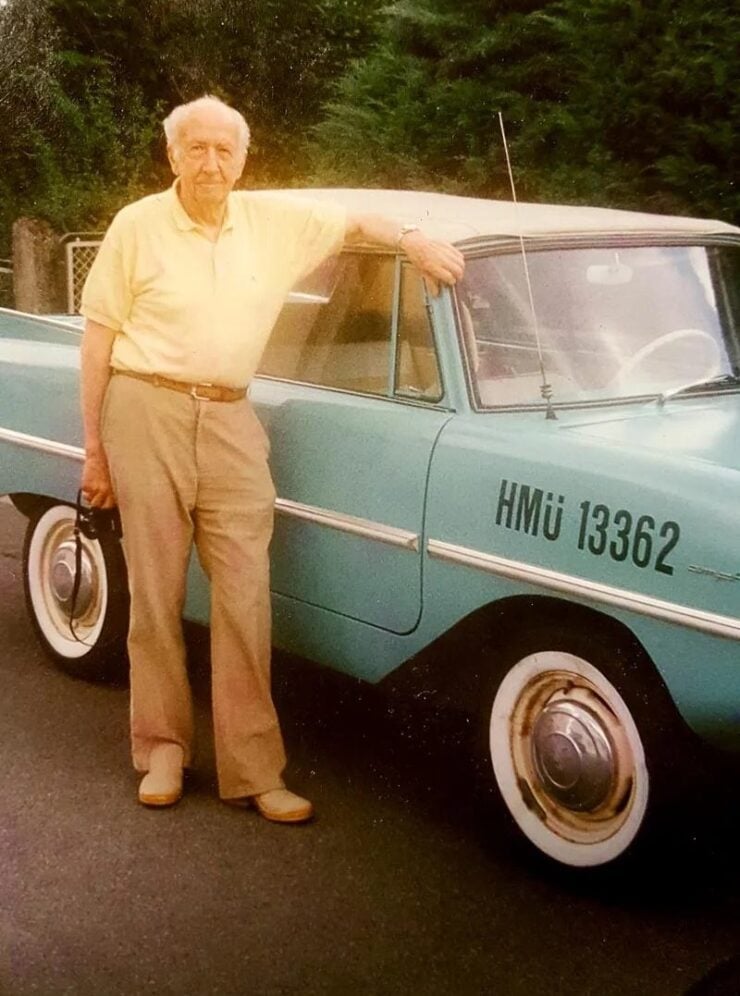

The similarities between Trippel and Porsche are more than skin deep, both men worked closely with the Nazi Party, both also worked closely with Adolf Hitler before and during WWII, and both spent time in French prisons for their work with the Nazis in the years after the war ended.
Despite the darkness that may surround the origins of the Beetle and the Amphicar, both vehicles went on to become symbols of fun, freedom, and adventure – remaining just as popular today as they were all those decades ago.
Trippel first wanted to be a racing driver, as did countless other young men in the 1920s and 1930s, but his racing career seems to have been somewhat short-lived, in fact no discoverable public records exist of his competition entries.
By the mid-1930s Trippel began to experiment with amphibious car design, it would be a fascination that would stay with him for the rest of his life, and lead him into some dark places, though it would also see him become the designer of the most mass-produced amphibious car in history.
The Trippel SG6 And The Bugatti Factory
Trippel’s first production amphibious car was the Trippel SG6 which debuted in 1937 as essentially a metal tub on wheels. The first customer was the German Wehrmacht who ordered 20, then requested a military-specification version that could carry 16 troops over land and water.
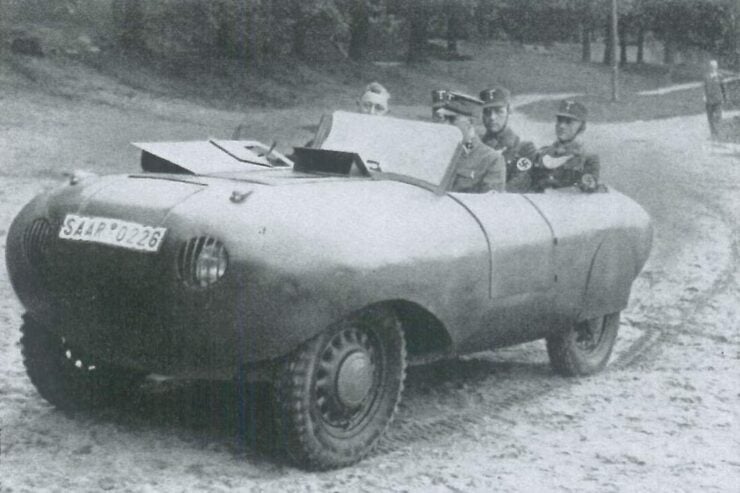

The design of the SG6 would be rapidly evolved due to its use in World War II, the model was also known as the Schwimmwagen SG6, however it’s important to note that it’s not related to the later Volkswagen Schwimmwagen Type 166 which largely replaced the SG6 by the mid-1940s.
During the war Trippel had been sent to France after it had been occupied by German forces where he took over the Bugatti plant at Molsheim in order to convert it for SG6 production. After the war he was arrested by the French authorities and would be sent to prison for three years as a war profiteer.
The Arrival Of The Amphicar 770
In the 1950s and now with the war behind him, Hans Trippel once again turned his attention to designing a new amphibious car. This time it would be a design intended for civilian use rather than military, and he would target the booming US outdoor leisure market with it.
The Amphicar Model 770 was designed from the 1950s and into the early 1960s, it then debuted at the 1961 New York Auto Show to a fascinated general public. The car featured modern styling by the standards of the time, with a two-door convertible body, seating for four, and a charming, almost cute appearance.
The 770 was powered by an engine sourced from the British Triumph Herald 1200, it was a 1147cc (69 cubic inch) inline-four with overhead valves, and an output of 43 bhp at 4,750 rpm. The engine was installed in the rear of the car, and it could power either the rear wheels, the twin rear propellers, or both the wheels and propellers when selected – useful when exiting the water.
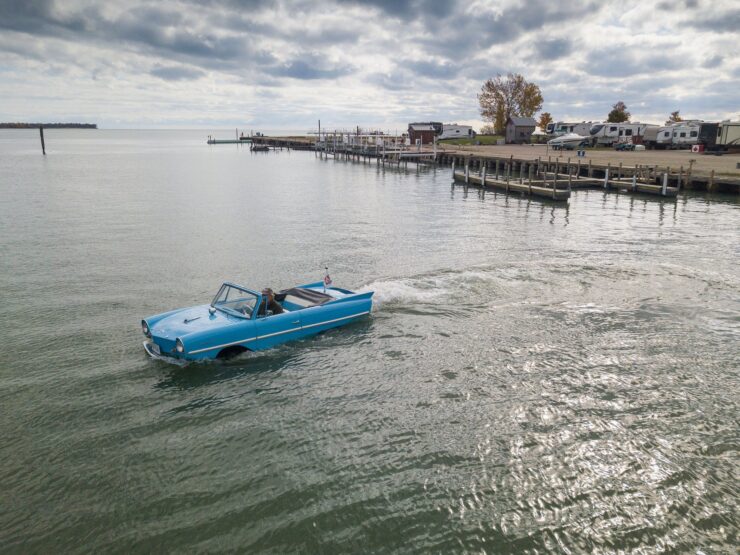

The top speed on the water was 7 knots, and the top speed on land was 70 mph – as a result the car was called the Model 770. Steering on land and on the water was accomplished using the front wheels, this means that steering on the water isn’t quite as precise as a more traditional rudder arrangement.
Early on it was believed that the company could sell as many as 25,000 examples of the Amphicar each year though numbers never came close to this. The vehicles needed significant maintenance, they were a combined sports car and boat after all, and they were relatively costly.
Production ran from 1961 until 1965, cars remained for sale until 1968 however they were all made using pre-existing parts. In total, 3,878 Amphicars were manufactured, and amazingly many of them have survived to the modern day thanks to a dedicated global ownership community.
The Restored 1962 Amphicar Shown Here
The vehicle you see here is a 1962 Amphicar that benefits from a full restoration that took place 15 years ago. It’s been in the care of its current owner for eight years, and it’s said to be fully functioning – both road-worthy and water-worthy.
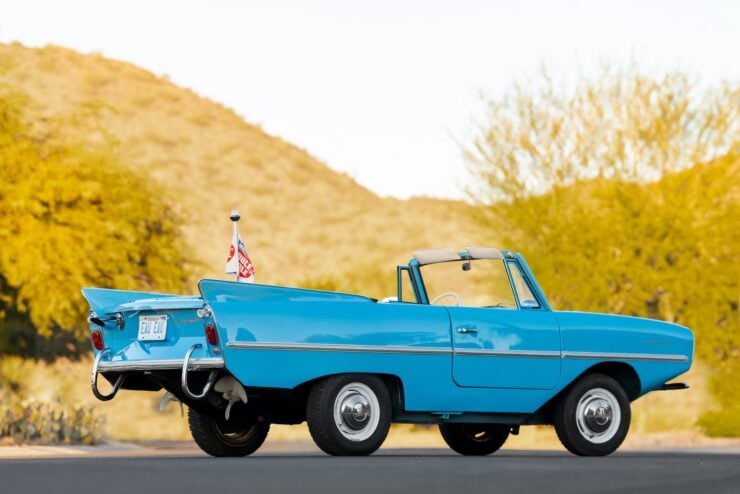

It’s finished in Lagoon Blue, one of the four original factory colors offered. In more recent years it has had some of its chrome refinished, it’s had two new tires fitted, brakes and brake lines have been replaced, as well as bearings, bilge pumps – one automatic and one manual, and a new starter and fuel pump have been installed.
It’s now being offered by RM Sotheby’s as part of their Arizona Auction on the 25th of January with a price guide of $70,000 – $90,000 USD. If you’d like to read more about it or register to bid you can visit the listing here.
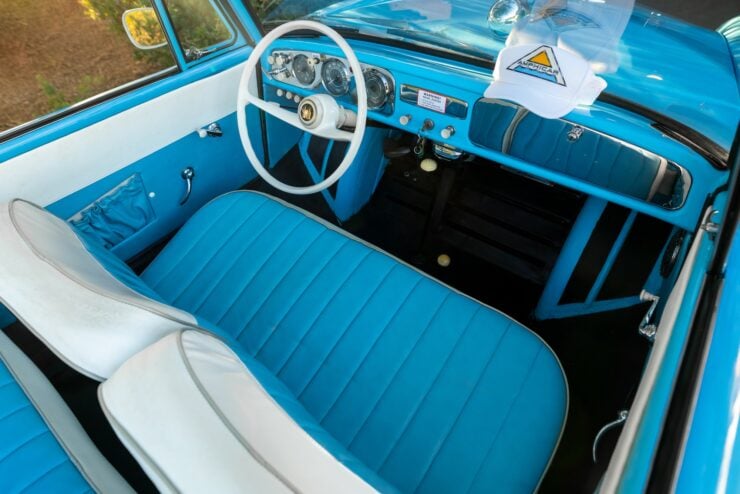
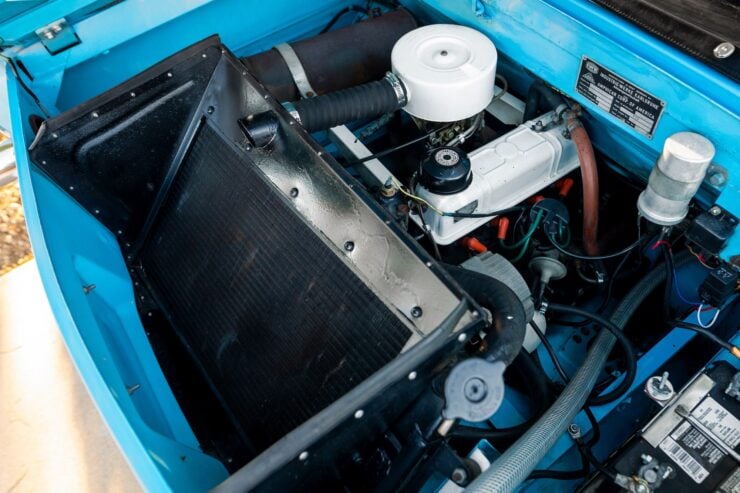
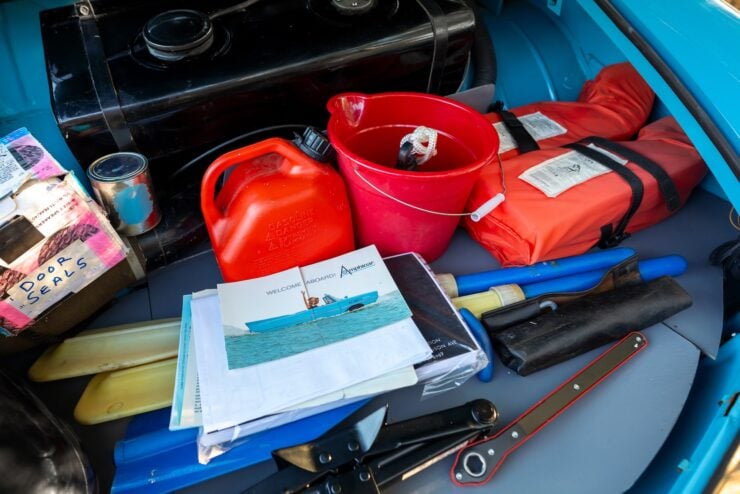
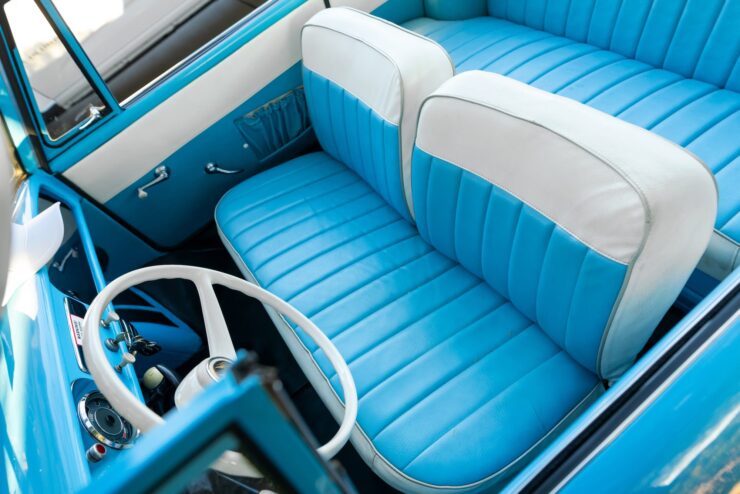
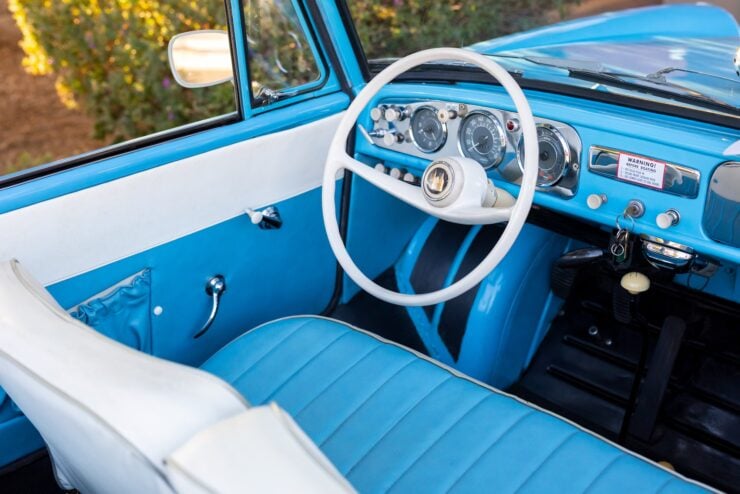
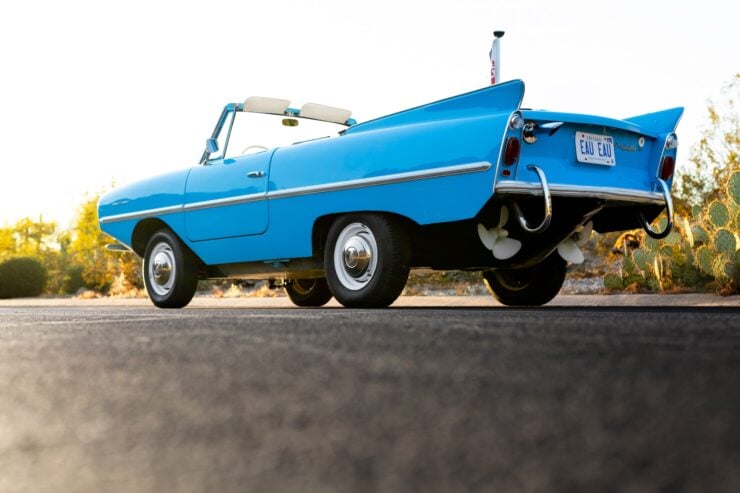
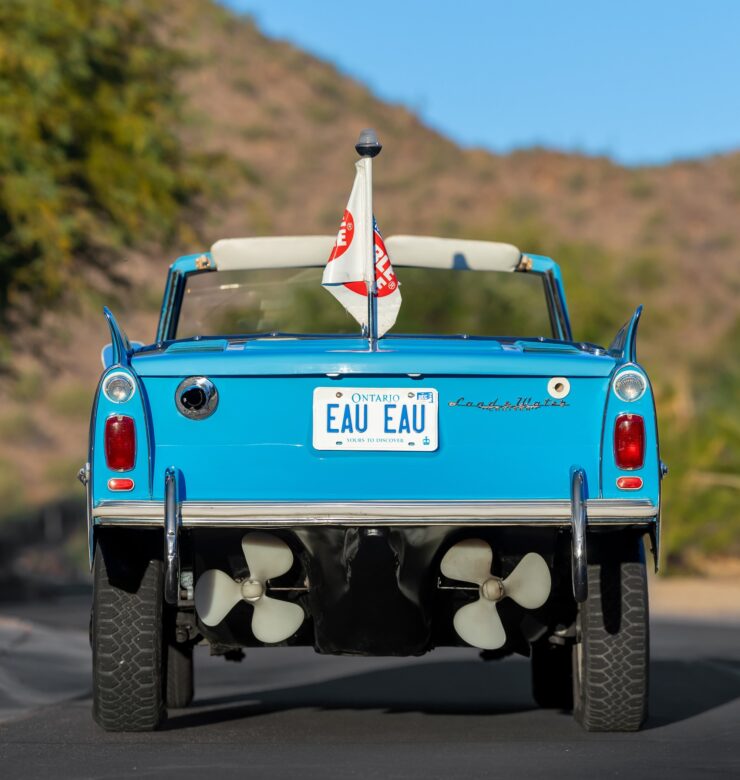
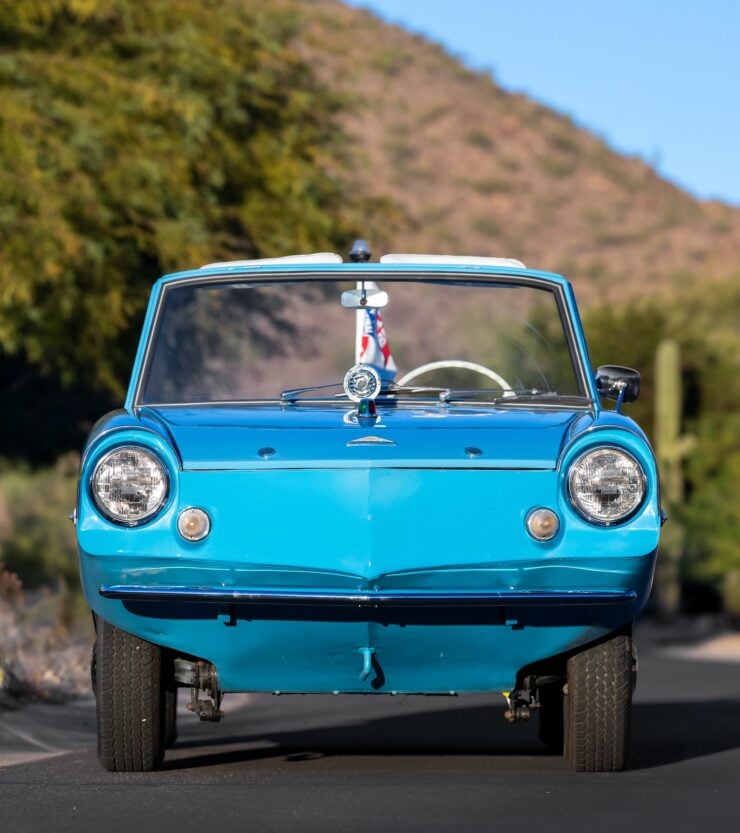
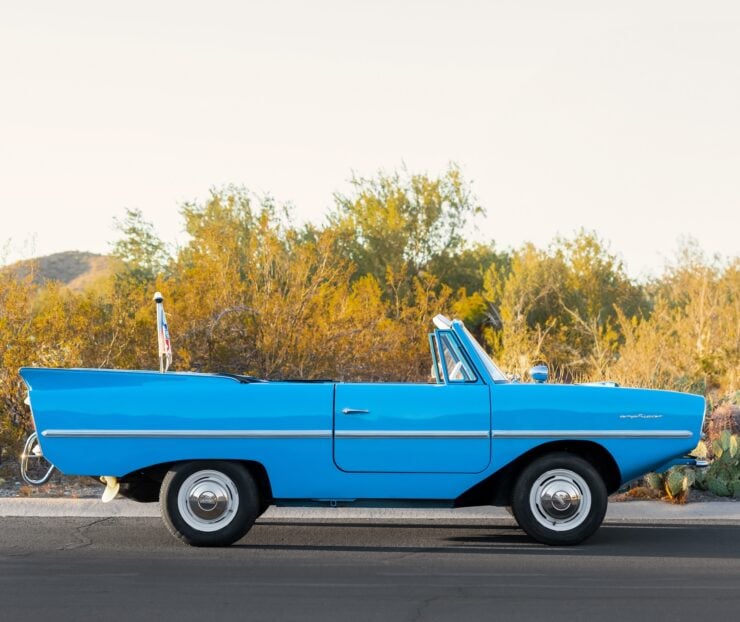
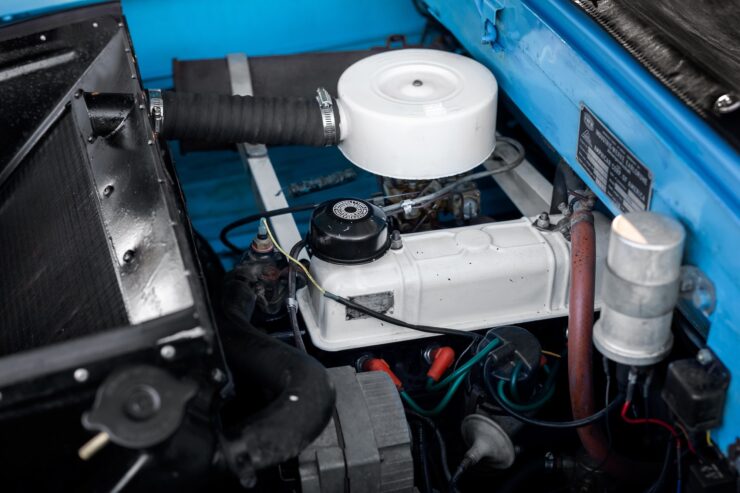

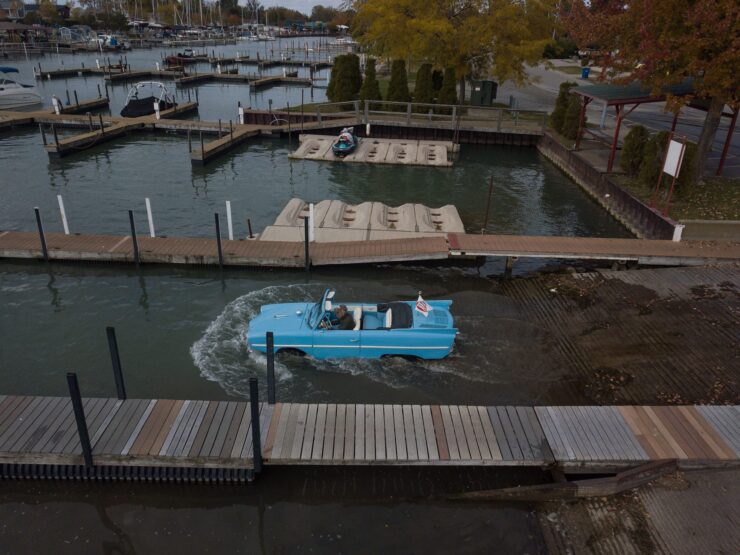
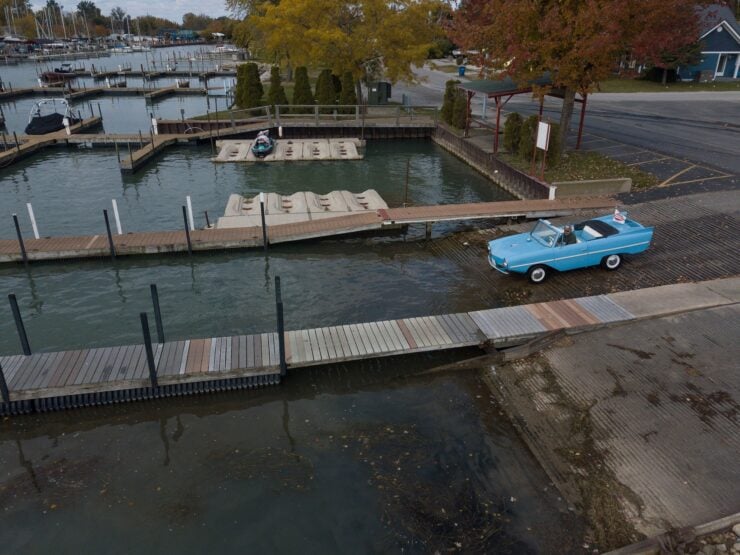
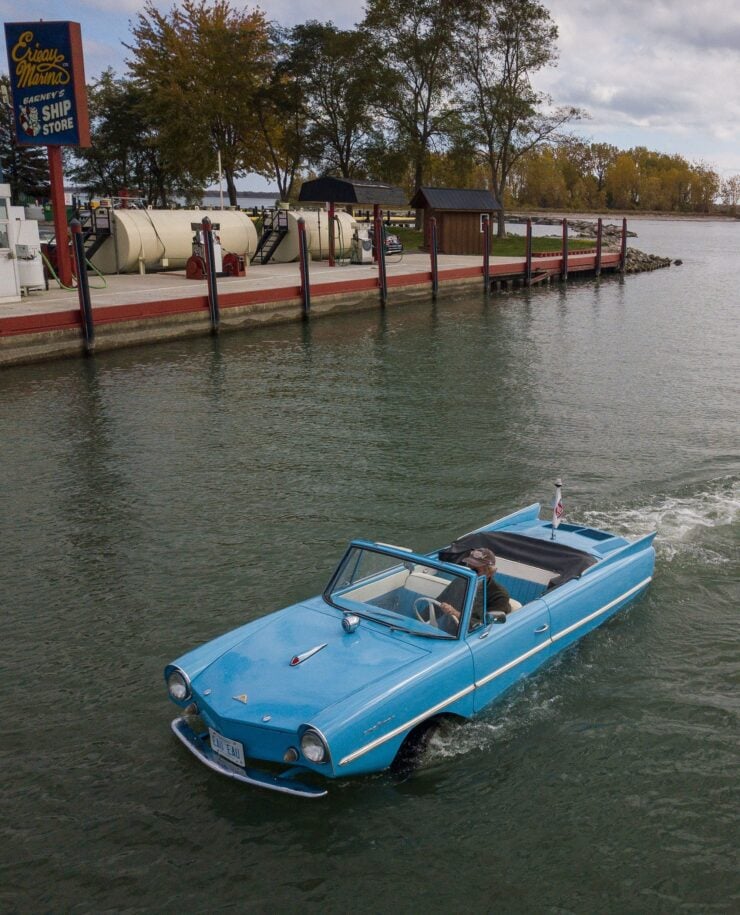
Images: Darin Schnabel ©2023 Courtesy of RM Sotheby’s

